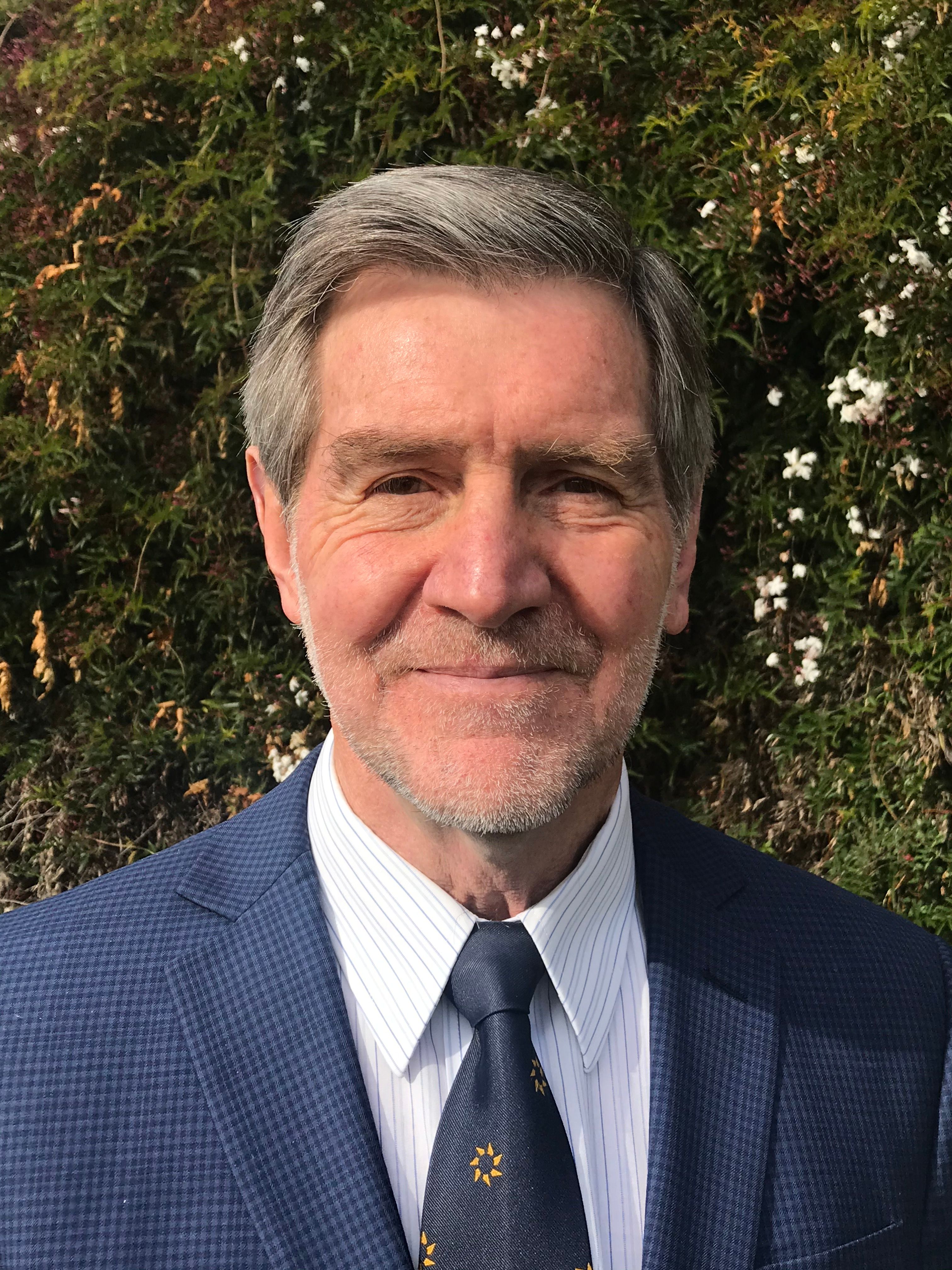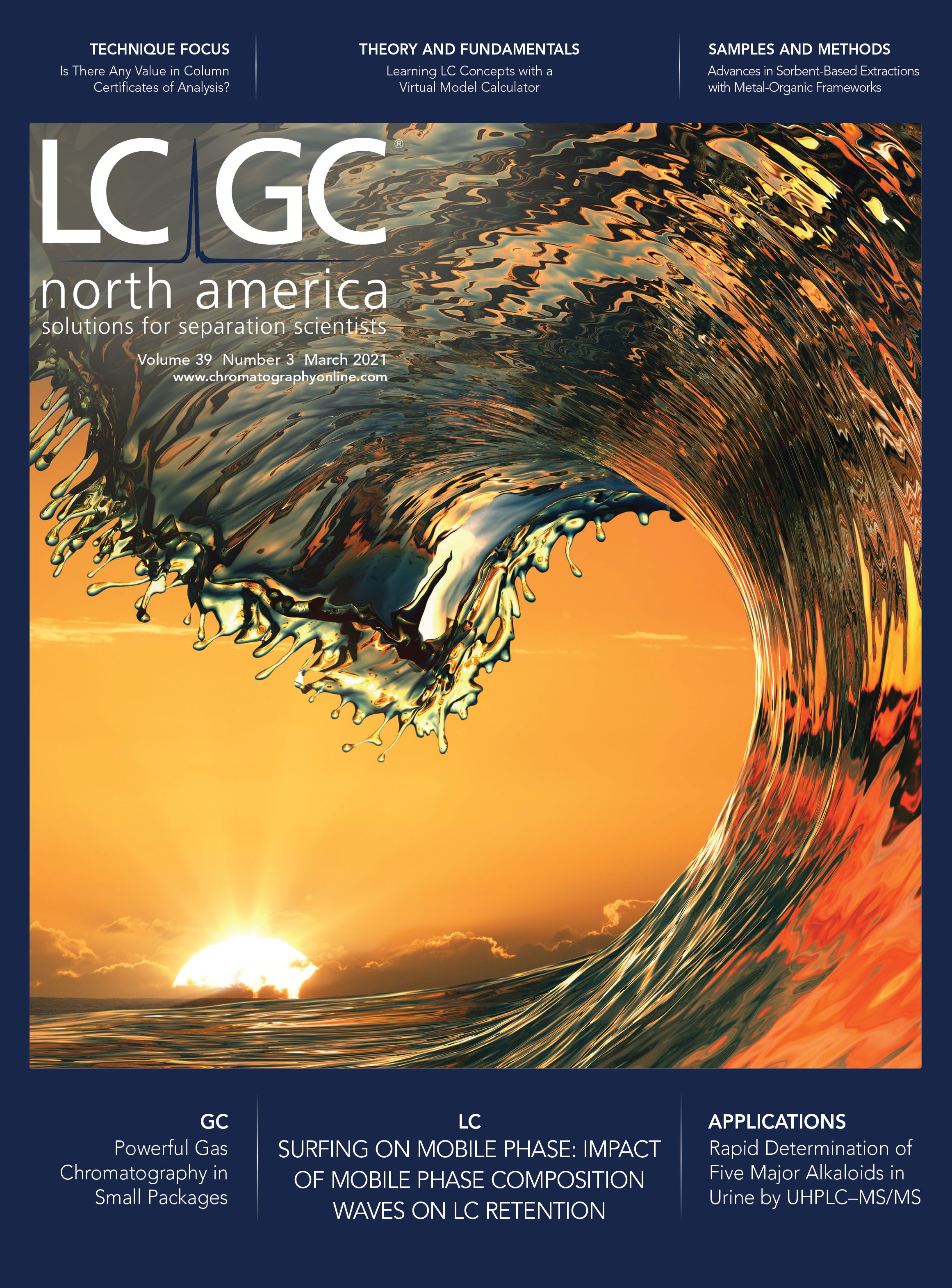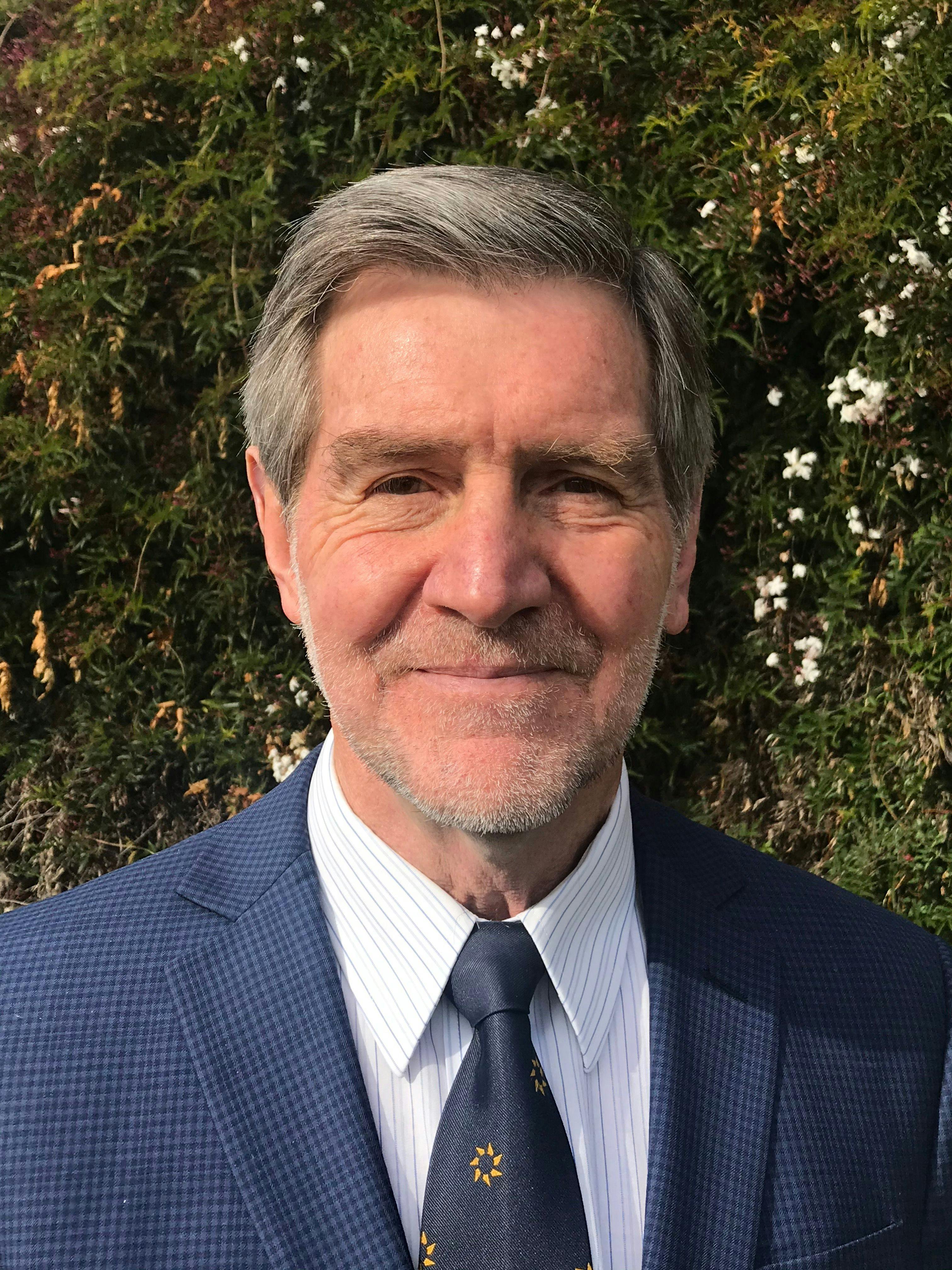A Lifetime of Contributions for Advancing Research in Separation Science: Paul Haddad, the Winner of the 2021 Lifetime Achievement in Chromatography Award
Paul Haddad of the University of Tasmania in Australia is distinguished as the foundation director of the Australian Centre for Research on Separation Science (ACROSS). He is well known for his research in many analytical techniques, including high performance liquid chromatography (HPLC), ion chromatography (IC), capillary electrophoresis (CE) and capillary electrochromatography (CEC). He is the winner of the 2021 LCGC Lifetime Achievement in Chromatography Award, which honors an outstanding and seasoned professional for a lifetime of contributions to the advancement of chromatographic techniques and applications. He recently spoke to us about his research work and career.
Many consider you to be a leader in the study of separation mechanisms and methods of detection, with a view to developing mathematical models to improve fundamental understanding of these aspects of chromatography. What would you say are your most important contributions to the development of new chromatographic and electrophoretic methods of analysis?
Trying to identify my most important contributions is exceedingly difficult because of the wide range of chromatographic fields in which I have worked and the very large number of students and collaborators who have contributed. My publications list in excess of 150 co-authors and for this reason I feel that our contributions should be viewed as a whole rather than trying to single out specific achievements. However, I will mention below just a couple of broad areas where I feel that our contributions have been significant.
I have always been interested in chromatographic retention mechanisms and electrophoretic migration mechanisms, especially in the derivation of mathematical models which describe these mechanisms. Once a suitable mathematical model is available, method optimization can be accelerated greatly because retention time can be predicted for a wide variety of conditions and then used to identify the optimal conditions. My group has published widely on such retention models for IC and electrophoresis and we have tried to focus on models which can be applied with minimal input data. We have derived IC retention models for isocratic elution, gradient elution, and complex eluent profiles involving multiple sequential isocratic and gradient steps and these models have underpinned commercial IC simulation and optimization software sold by Thermo Fisher Scientific which has had wide uptake by users.
My group has also maintained a strong focus on the separation of metal complexes. We have explored a wide variety of ligand types, but our greatest successes have been with metallocyanide complexes. These complexes are of great importance in a wide range of industrial process, but perhaps the best example is in the extraction of gold from its ores. This is usually undertaken by complexing the gold with cyanide, adsorbing the gold cyanide complex onto activated carbon, and then desorbing with hydroxide. Operators of this gold extraction process need to know how much gold cyanide is in solution during the leaching process, how much free cyanide is available, and how much cyanide has been consumed by complexes of other metals, such as iron. We developed a “cyanide analyzer” which could supply all of the required information in a single run.
You and your research group have recently developed a miniaturized deep-ultraviolet light emitting diode (LED)-based detector for use in a portable capillary-scale liquid chromatography (LC) system (1). This detector was incorporated into a briefcase-sized portable capillary HPLC system. In your estimation, how will this device improve field analysis using HPLC methods?
The universality of UV detection increases at lower wavelengths, and the absorptivity of most organic molecules also increases at lower wavelengths. Thus, deep UV detection increases sensitivity and also widens the range of compounds which can be detected. In the case of a miniaturized, portable instrument there is a strong necessity to minimize weight and also heat production. The deep-UV LED is a perfect solution to these challenges and the particular LED that we evaluated is a prototype, pre-production version that was supplied to us for evaluation.
You have reviewed the literature from 2015–2020 on the topic of predictive models for retention times in LC (2)., What can you tell us about the state of the art in retention-time modeling? What additional of future work would be helpful to the field of retention modeling?
Method development in liquid chromatography is generally a slow process because of the need to equilibrate the system with each new mobile phase that is to be evaluated. For this reason, accurate prediction of retention time is a very desirable goal. Retention time can be calculated from mathematical models which are derived from a sound understanding of the chromatographic retention mechanism, but such models usually require some experimental input and these models are applicable only when the actual retention mechanism is well understood. For these reasons, the focus in the field of retention prediction has been to use statistical approaches to model large databases of retention data, based on the chemical structure of the analytes for which retention times are sought. This process, known as quantitative structure-retention relationships (QSRR), enables retention times to be predicted with sufficient accuracy (1-5%) to choose the best chromatographic system for a desired separation, based only on the structures of the analytes to be separation. However, once the optimal system has been selected there is usually a subsequent step in which the fine details of the mobile phase composition are optimized, and this generally involves some experimental input.
We have recently completed a major QSRR project in which we worked with industrial partners (Pfizer, Thermo Fisher, and LC Resources) to devise some new approaches to the QSRR process. We have found that the most significant step in the development of a statistical QSRR model is the choice of the retention database compounds which will be used to train the model. It is tempting to think that using a large number of training compounds might give the best results, but in fact the reverse is true. In particular, if one selects only those training compounds which have chemical similarity to the target compounds, good prediction accuracy can be achieved using fewer than 10 training compounds. It also turns out that best results are achieved when a new QSRR model is made for each individual compound (that is local models are derived rather than global models). In my view, the future directions of QSRR research will involve applications in nontargeted metabolomics, use of more comprehensive retention databases involving a wider variety of analytes and stationary phases (most probably accessed by crowd sourcing), application to the separation of enantiomers, and the use of the QSRR methodology to gain better insight into chromatographic retention mechanisms. Better access to very fast computers will also speed up the QSRR process.
You have continued research and development of a miniature UV absorbance detector for capillary LC based on LED technology (3). This work is important for miniaturized analysis systems. How is your specific research approach different from your contemporaries for LC detection?
There are several groups working currently and in the recent past on the development of a miniaturized, portable LC instrument and some of these groups have produced very nice instruments. Our focus differs somewhat in two aspects. First, our research is strongly directed toward the needs of industry, and in particular the pharmaceutical industry. We are actively collaborating with a local instrument manufacturer (Trajan Scientific and Medical) and a major pharmaceutical company (Pfizer) to design our portable instrument as a flexible platform which can be used right across the drug development portfolio, from drug synthesis and design through to manufacturing. This flexibility in application requires a platform where detectors can be changed easily and sample preparation steps, such as dilution, can be incorporated. The second point of difference is cost. Most importantly, we are not trying to make a miniature UHPLC instrument capable of high-speed runs using high pressures. Rather, we are using low-cost syringe pumps capable of medium pressure, coupled with low-cost switching valves and LED-based detectors to come up with a purpose-built, inexpensive instrument that can be used in a wide variety of applications. We are not trying to replace benchtop LC systems in the pharmaceutical industry but rather to complement them with a new instrument that is inexpensive and can therefore be applied in numerous at-line and on-line situations.
What do you consider are the most important research publications you have produced science over your career in this field?
As stated above, I am reluctant to choose particular publications because to do so would require me to highlight some collaborators rather than others. However, the one publication that I am happy to mention is a book on IC which I published in 1990 (Paul R. Haddad and Peter E. Jackson, Ion Chromatography: Principles and Applications, Elsevier, Journal of Chromatography Library, Vol. 46). Peter and I are very proud of this book—it is nearly 800 pages long, it required a monumental effort to write, and when published it was the most comprehensive IC text available. We feel that we achieved a nice balance between a very comprehensive theoretical treatment of all relevant topics and an equally comprehensive tabulation of applications. In our view the book offered something to people working across the entire IC spectrum, from fundamental researchers to users trying to address specific problems. The book has been cited over 700 times and has won several awards, including inclusion in the Laboratory Equipment Top 10 Products for 1990.
What can you share with the readers of LCGC regarding what you would consider to be the most important new areas of research in chromatography?
I will confine my comments here to liquid chromatography. LC is now a very well-established analytical technique and one might expect its development to now be slow. However, progress continues to be rapid, with ground-breaking new developments appearing continually and even entirely new LC technologies emerging. In my view important areas of research will be continued development of new stationary phases to improve peak resolution and selectivity for problem analytes (such as enantiomers), improved peak capacity, increased use of 3D printing, and new developments in predictive tools (with QSRR being but one example). Improved peak capacity is perhaps the most urgent target because current LC systems cannot cope effectively with the huge number of analytes present in biological systems. For this reason, the use of LC in “omics” systems will not reach its full potential until we can produce LC systems with perhaps 10 times the peak capacity of current approaches. For this, 2D and 3D chromatographic systems will provide the key, but to achieve the necessary peak capacity they will need to be coupled with high-resolution stationary phases and high-resolution mass spectrometers. A further key technology that will contribute to higher peak capacity is 3D printing, with the ultimate goal being to print a multidimensional separation system.
What words of advice would you share with young researchers just getting started, or even undergraduates considering a future career in science? Do you have any specific advice for those interested in separation science as a career?
Separation science is a great career, with endless possibilities and directions. The advice that I always give to my students is to see their skills as general rather than specific and to recognize that all forms of chromatography are connected. After doing an undergraduate degree and then a PhD, many students see their skills as being confined to the specific problem on which they have worked during their PhD. They can then be unwilling to look for a job in other areas of chromatography. I try to emphasize that what they have learned in one area of chromatography can be easily translated into another. I often relate my own experience as an early career researcher. I undertook a PhD in the field of molecular fluorescence spectroscopy applied to inorganic ternary complexes. When I returned to the same university as a junior staff member some five years later, my department head (who had also been my PhD advisor) instructed me to develop an interest in HPLC. At that time, I did not even know what the acronym HPLC meant, but I recognized that my PhD had provided me with generic skills in problem solving, experimental hypothesis and design, literature searching, and report writing and that these skills would be sufficient to provide a strong base for moving into a new field.
References
(1) S.C. Lam, L.J. Coates, V. Gupta, H.J. Wirth, A.A. Gooley, P.R. Haddad, and B. Paull, Ultraviolet absorbance detector based on a high output power 235 nm surface mounted device-type light-emitting diode, J. Chromatogr. A 1631, 461540 (2020). doi.org/10.1016/j.chroma.2020.461540.
(2) P.R. Haddad, M. Taraji, and R. Szücs, Prediction of Analyte Retention Time in Liquid Chromatography, Anal. Chem. (2020). doi.org/10.1021/acs.analchem.0c04190.
(3) M. Hemida, L.J. Coates, S. Lam, V. Gupta, M. Macka, H.-J. Wirth, A.A. Gooley, P.R. Haddad, and B. Paull, Miniature Multiwavelength Deep UV-LED-Based Absorption Detection System for Capillary LC, Anal. Chem. 92(20), 13688–13693 (2020). doi.org/10.1021/acs.analchem.0c03460.
Paul Hadad

Paul Haddad, is the 2021 LCGC Lifetime Achievement in Chromatography Award winner. He received his PhD in analytical chemistry from the University of New South Wales, Australia in 1975, and his BS degree in 1971 from the same institution. He also holds a Diploma of Military Studies (Science) awarded in 1969 by the Royal Military College, Duntroon, Australia. In 1996, he was awarded a Doctor of Science by the University of New South Wales, Australia.
He is an Emeritus Distinguished Professor at the University of Tasmania, Australia and was the foundation Director of the Australian Centre for Research on Separation Science (ACROSS). He is best known for his research on the theory, mechanism and applications analytical separation science in liquid phases, with particular emphasis on the separation and quantification of ionic species.
He has performed research in such separation techniques as high performance liquid chromatography (HPLC), ion chromatography (IC), capillary electrophoresis (CE) and capillary electrochromatography (CEC). The general aim of this research has been to study separation mechanisms and methods of detection, with a view to developing mathematical models improving fundamental understanding of these aspects and to apply this understanding to the development of new chromatographic and electrophoretic methods of analysis. Other research work involves the study of detection methods, with an emphasis on potentiometric detection using reactive metallic electrodes and the theory and application of indirect methods of spectrophotometric detection. The separation of complexed metal ions and sample handling methods have comprised further major research themes.
Jerome Workman, Jr. is the senior technical editor of LCGC and Spectroscopy. Direct correspondence to jworkman@mjhlifesciences.com.

Common Challenges in Nitrosamine Analysis: An LCGC International Peer Exchange
April 15th 2025A recent roundtable discussion featuring Aloka Srinivasan of Raaha, Mayank Bhanti of the United States Pharmacopeia (USP), and Amber Burch of Purisys discussed the challenges surrounding nitrosamine analysis in pharmaceuticals.
Silvia Radenkovic on Building Connections in the Scientific Community
April 11th 2025In the second part of our conversation with Silvia Radenkovic, she shares insights into her involvement in scientific organizations and offers advice for young scientists looking to engage more in scientific organizations.
Regulatory Deadlines and Supply Chain Challenges Take Center Stage in Nitrosamine Discussion
April 10th 2025During an LCGC International peer exchange, Aloka Srinivasan, Mayank Bhanti, and Amber Burch discussed the regulatory deadlines and supply chain challenges that come with nitrosamine analysis.

.png&w=3840&q=75)

.png&w=3840&q=75)



.png&w=3840&q=75)



.png&w=3840&q=75)










